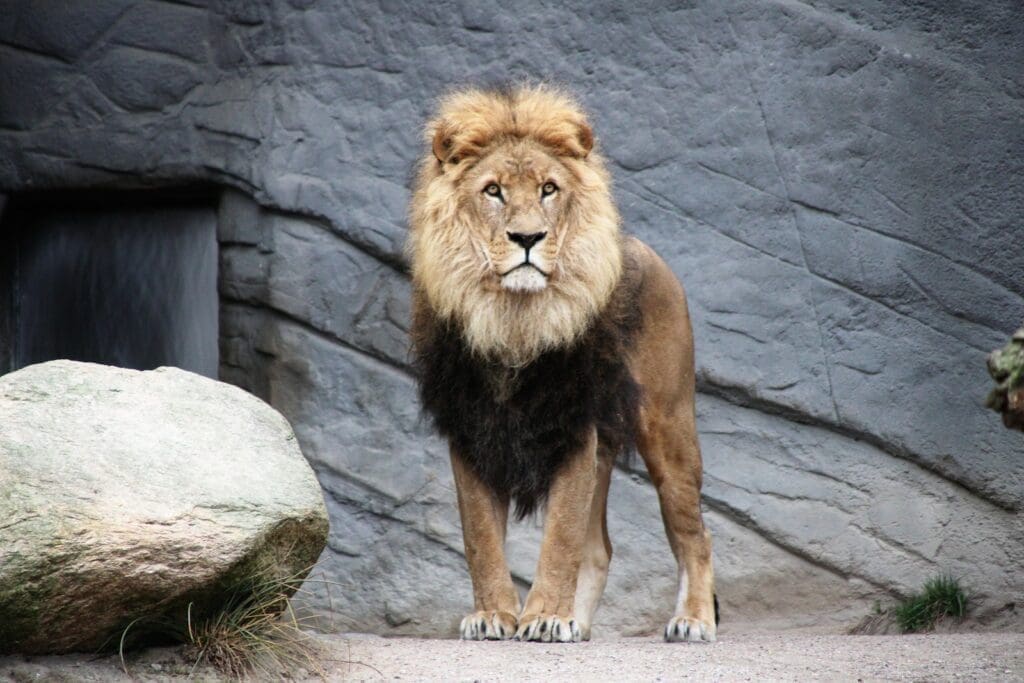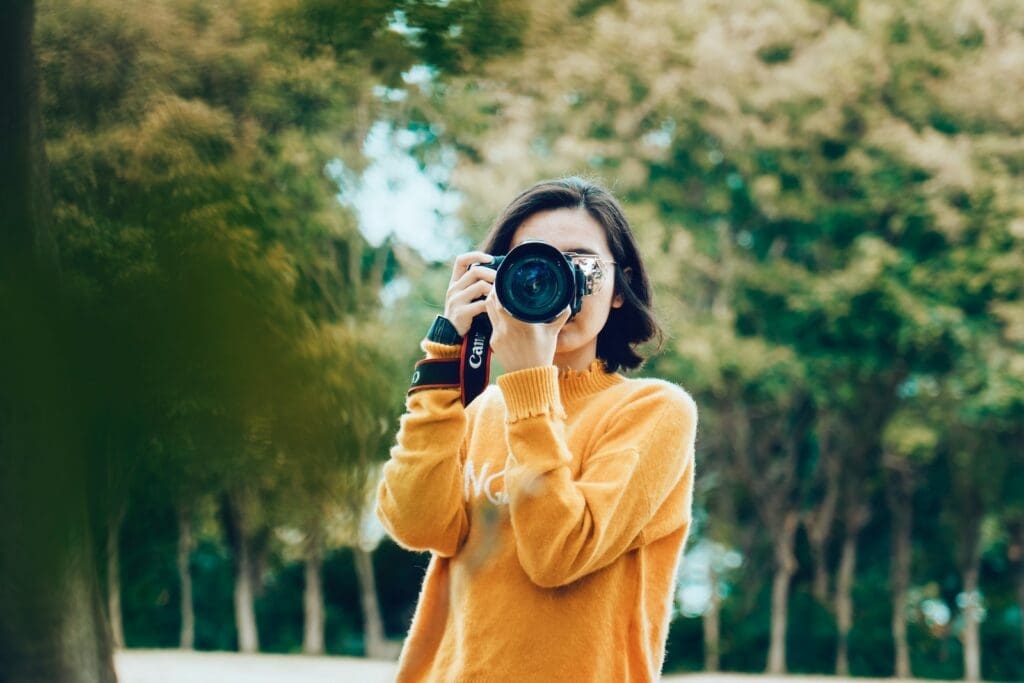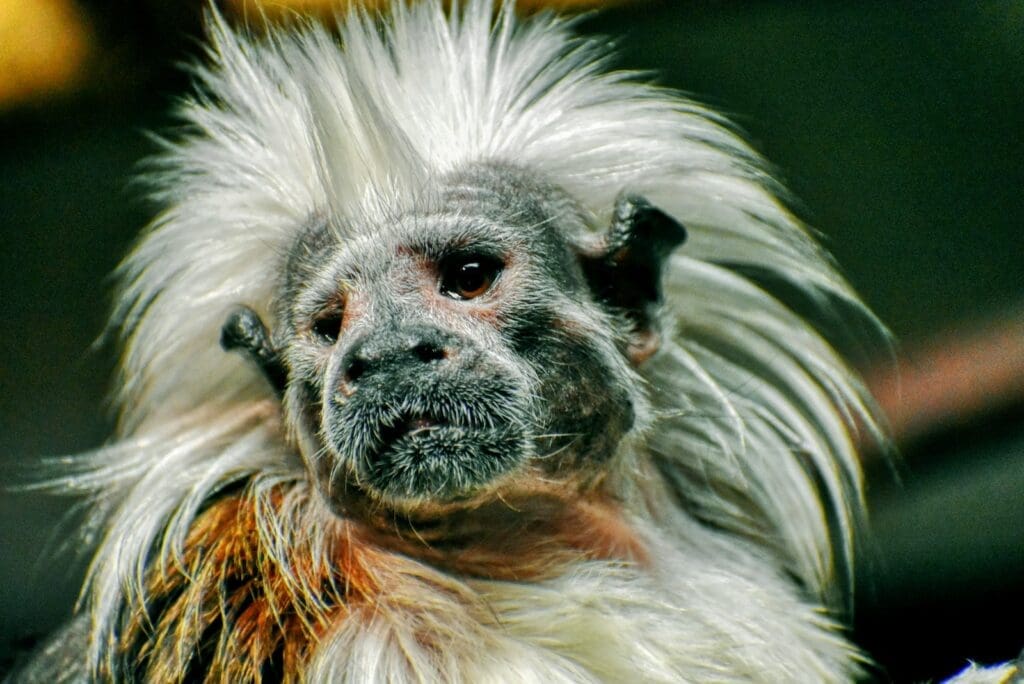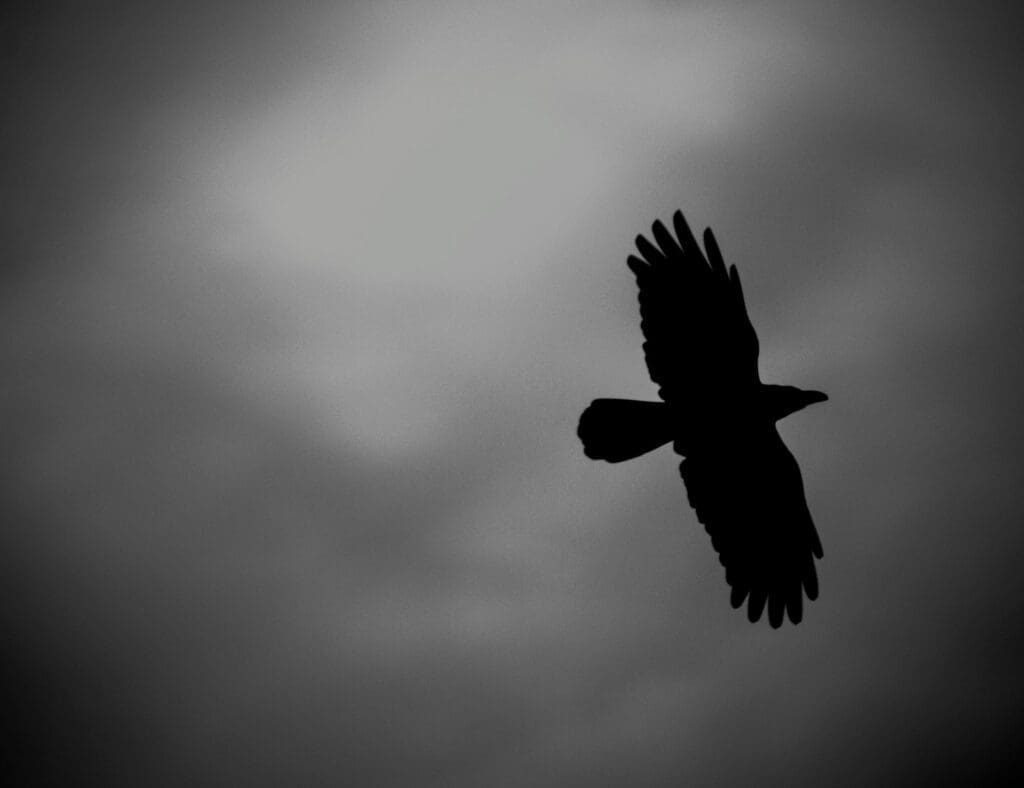
Zoos are a great place to practice wildlife photography. With a variety of animals from different parts of the world, zoos offer a unique opportunity to capture some amazing photos of creatures that you might not have the chance to see in the wild. However, taking stunning photos of animals in a zoo can be challenging. That’s why it’s important to have some tips and tricks up your sleeve to help you capture the best shots possible.
One of the most important things to keep in mind when taking photos in a zoo is to bring the right gear. You’ll need to make careful gear choices to get great zoo photos. You won’t generally have the opportunity to get up close and personal with the animals, so a smartphone equipped with a standard wide-angle lens isn’t going to cut it. Instead, consider investing in a telephoto zoom lens that will allow you to get closer to the animals without disturbing them. Additionally, a tripod can help you stabilize your shots and ensure that your photos are sharp and in focus.
Another important tip for taking great zoo photos is to be patient. Animals can be unpredictable, and it might take some time for them to move into the right position for the perfect shot. Take your time and wait for the right moment to capture your photo. Additionally, try to capture photos that show the animals in a natural-looking environment. Use shallow depth of field to shoot through fencing and try to avoid capturing too many man-made objects in the background. With these tips in mind, you’ll be well on your way to capturing some amazing photos of animals in the zoo.
Understanding Zoo Photography
Zoo photography is a unique genre of photography that requires a specific set of skills and techniques to capture amazing photos of animals. This section will discuss the challenges unique to zoos and the difference between zoo and wildlife photography.
Challenges Unique to Zoos
One of the main challenges of zoo photography is the presence of barriers, such as fences, glass, and cages, which can obstruct the view and create reflections. Zoo photographers need to find ways to blend out the fences and other barriers to create a natural-looking image. They also need to be patient and wait for the animals to move into a position that is not obstructed by the barriers.
Another challenge of zoo photography is the lighting conditions. Most zoos have limited natural light, and the artificial lighting can create harsh shadows, color casts, and reflections. Zoo photographers need to be able to adjust their camera settings and use artificial lighting to create a well-exposed and balanced image.
Zoo vs Wildlife Photography
Zoo photography is often compared to wildlife photography, but there are some significant differences between the two. Wildlife photographers have the freedom to move around and capture animals in their natural habitat, whereas zoo photographers are limited to the animals’ enclosures.
Zoo photographers also have the advantage of being able to get closer to the animals, which can result in more intimate and detailed shots. However, this can also create a false sense of intimacy, as the animals are still in captivity and may not be exhibiting their natural behavior.
Overall, zoo photography requires a different set of skills and techniques than wildlife photography, but both genres require patience, observation, and an understanding of animal behavior.
In conclusion, understanding the challenges unique to zoos and the difference between zoo and wildlife photography is essential for capturing amazing photos of animals in captivity. Zoo photographers need to be patient, observant, and skilled in blending out barriers and adjusting their camera settings to create a natural-looking image.
Essential Gear for Zoo Photography
When it comes to zoo photography, having the right gear is essential to capturing amazing photos of animals. In this section, we’ll cover the essential gear you’ll need to get started with zoo photography.
Choosing the Right Camera
When choosing a camera for zoo photography, there are a few things to keep in mind. First, you’ll want a camera that has good autofocus capabilities, as animals can move quickly and unpredictably. A DSLR or mirrorless camera with an APS-C sensor is a great choice, as it provides a good balance of image quality and portability.
Lenses for Zoo Photography
Lenses are arguably the most important part of your gear when it comes to zoo photography. A telephoto lens is essential for capturing animals that are far away, while a macro lens can be great for getting up close and personal with smaller animals. A zoom lens can also be useful for quickly changing your focal length without having to switch lenses.
Tripods and Monopods
Using a tripod or monopod can be incredibly helpful in zoo photography, as it allows you to stabilize your camera and get sharper shots. A tripod is great for setting up a shot and waiting for the perfect moment, while a monopod can be useful for quickly moving around the zoo and getting shots from different angles.
Using Filters
Finally, using filters can be a great way to enhance your zoo photos. A polarizing filter can help reduce glare and increase contrast, while a neutral density filter can be useful for shooting in bright sunlight and getting a slower shutter speed.
Overall, having the right gear is essential to capturing amazing photos of animals at the zoo. By choosing the right camera, lenses, and accessories, you can take your zoo photography to the next level.
Camera Settings for Zoo Photography
When it comes to zoo photography, camera settings play a crucial role in capturing amazing photos of animals. In this section, we will discuss the essential camera settings for zoo photography, including mastering ISO, aperture, and shutter speed, understanding focus and autofocus, and dealing with reflections and noise.
Mastering ISO, Aperture, and Shutter Speed
To capture stunning photos of animals in a zoo, it’s essential to master ISO, aperture, and shutter speed. ISO determines the camera’s sensitivity to light, while aperture controls the amount of light entering the lens. Shutter speed determines the length of time the camera’s sensor is exposed to light.
In zoo photography, it’s recommended to use Aperture Priority mode as it allows you to set the widest lens aperture, which automatically sets the fastest shutter speed available for the conditions. This setting is perfect for capturing animals in motion.
Understanding Focus and Autofocus
In zoo photography, animals tend to move around a lot, making it challenging to capture sharp and focused photos. Understanding focus and autofocus is essential to overcome this challenge.
To capture sharp photos, it’s recommended to use a single-point autofocus system and set the focus point on the animal’s eye. This technique ensures that the animal’s eye is in focus, making the photo look more natural.
Dealing with Reflections and Noise
Zoo enclosures often have glass or water barriers that can cause reflections in your photos. To avoid reflections, it’s recommended to use a polarizing filter. This filter helps reduce glare and reflections, making your photos look more natural.
In low light conditions, increasing the ISO can cause noise in your photos. To avoid noise, it’s recommended to use a tripod and set a slower shutter speed. This technique allows you to capture sharp and noise-free photos.
In conclusion, mastering camera settings is essential to capture amazing photos of animals in a zoo. By understanding ISO, aperture, and shutter speed, focusing techniques, and dealing with reflections and noise, you can capture stunning photos that will make your portfolio stand out.

Composing Your Zoo Photos
When it comes to zoo photography, composition is key. The way you frame your shots can make the difference between a mediocre photo and a stunning one. Here are some tips on how to compose your zoo photos for maximum impact.
The Importance of Backgrounds
One of the biggest challenges in zoo photography is dealing with distracting backgrounds. Since you can’t control the environment, you have to be creative in how you use it. Look for backgrounds that complement your subject and add context to the photo. Avoid busy or cluttered backgrounds that draw attention away from the animal.
The Role of Distance and Focal Length
The distance between you and the animal can greatly affect the composition of your photo. Use a longer focal length to zoom in on your subject and create a shallow depth of field, which can blur the background and make your subject stand out. If you’re shooting through glass, get as close as possible and use a polarizing filter to reduce glare.
Capturing Animal Behavior
One of the most rewarding aspects of zoo photography is capturing animal behavior. Look for moments when the animal is doing something interesting or unusual. This can be anything from grooming to playing to feeding. Try to capture the animal’s personality and unique characteristics.
Timing Your Shots
Timing is everything in zoo photography. Be patient and wait for the right moment to capture your shot. Pay attention to feeding times, when animals are most active and alert. Also, consider the time of day and lighting conditions. Early morning and late afternoon are ideal for soft, warm light that can add depth and dimension to your photos.
By following these tips, you can compose your zoo photos in a way that is both visually appealing and informative. Remember to experiment with different angles, perspectives, and techniques to find your own unique style.
Advanced Zoo Photography Techniques
Working with Moving Animals
One of the biggest challenges in zoo photography is capturing animals in motion. To do this successfully, photographers need to use a fast shutter speed and a high ISO to freeze the action. They should also use a continuous shooting mode to capture multiple frames in quick succession. Additionally, it’s important to anticipate the animal’s movement and position oneself accordingly.
Shooting Through Glass and Cages
Photographing animals through glass or cages can be tricky, as these barriers can cause reflections, glare, or distortions. To avoid these issues, photographers should use a polarizing filter or a lens hood to reduce reflections and improve contrast. They should also shoot at an angle to minimize the distortion caused by the glass or mesh. If possible, they should also try to get as close as possible to the barrier to reduce the distance between the lens and the subject.
Eye-Level and Angle Shooting
To create more engaging and intimate photos, photographers should try to shoot at the animal’s eye level or from a low angle. This can help convey the animal’s perspective and personality. Additionally, they should experiment with different angles and compositions to create interesting and dynamic images. For example, they could use a wide-angle lens to capture the animal’s environment or a telephoto lens to isolate the animal from the background.
Using Flash and Lighting Conditions
While flash photography is not always allowed or recommended in zoos, it can be useful in certain situations. For example, it can help fill in shadows, freeze motion, or enhance colors. However, photographers should be careful not to startle or disturb the animals with the flash. They should also use a diffuser or bounce card to soften the light and avoid harsh shadows. Alternatively, they could use natural light to their advantage by shooting during the golden hour or the blue hour, when the light is softer and warmer. They could also experiment with backlighting, silhouettes, or reflections to create more artistic and dramatic photos.
Post-Processing Tips for Zoo Photographs
Post-processing is an essential part of modern photography, and zoo photography is no exception. With the right post-processing techniques, you can take your zoo photographs to the next level. Here are a few post-processing tips that can help you enhance your zoo photographs:
Use Editing Software
Editing software like Adobe Lightroom and Photoshop can help you enhance your zoo photographs in various ways. You can adjust the exposure, contrast, highlights, and shadows of your photographs to make them look more vibrant and detailed. You can also use the color correction tools to adjust the color temperature, saturation, and hue of your photographs.
Crop and Straighten Your Photos
Cropping and straightening your zoo photographs can help you improve their composition and visual impact. You can crop your photographs to remove unwanted elements or to focus on specific details. You can also straighten your photographs to correct any crooked lines or angles.
Remove Unwanted Objects
Sometimes, there may be unwanted objects in your zoo photographs that can distract the viewer. You can use the healing brush or clone stamp tool in your editing software to remove such objects. You can also use the content-aware fill tool in Photoshop to fill in the gaps left by the removed objects.
Sharpen Your Photos
Sharpening your zoo photographs can help you bring out the details and make them look more crisp and clear. You can use the sharpening tools in your editing software to adjust the amount, radius, and threshold of sharpening. However, be careful not to over-sharpen your photographs, as it can lead to noise and artifacts.
Apply Presets
Presets are pre-defined settings that you can apply to your zoo photographs to achieve a specific look or style. You can create your presets or download them from various online sources. However, be careful not to rely too much on presets, as they can make your photographs look generic and unoriginal.
Overall, post-processing can help you enhance your zoo photographs and bring out their full potential. However, it’s essential to use post-processing techniques in moderation and not to rely on them too much.
Conclusion
In conclusion, capturing amazing photos of animals at the zoo requires patience, the right gear, and a few useful techniques. To get the best shots, photographers should invest in a stable tripod with a panoramic ball head and a telephoto zoom lens.
It’s also important to shoot in shade to avoid unwanted reflections and high contrast scenes. Photographers should take advantage of natural light and avoid using flash or artificial lighting.
To capture natural-looking photos, photographers should wait for the right moment to capture the animal’s behavior and expressions. They should also pay attention to the background and framing of the shot to create a visually interesting composition.
Overall, with the right gear, techniques, and patience, photographers can capture stunning photos of animals at the zoo. By following the tips provided in this article, photographers can improve their skills and create memorable photos that showcase the beauty and diversity of wildlife.





